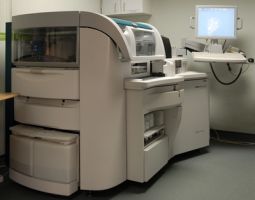
Ah summer, a blessing for some; misery for others. When summer hits, some people come alive, spending hours outdoors, while others dread the heat and glaring sunlight of the lazy days. Without a doubt, the increased sunshine has a number of benefits for our health and our mental outlook. One of these benefits is the production of vitamin D in our skin. Vitamin D is a fat soluble vitamin essential to many functions. Without vitamin D, the human form wouldn’t be possible.
Vitamin D has been a superstar among nutrients in the news lately. Study after study has come out extolling the virtues of this little miracle vitamin. But, unfortunately, also coming to light recently is that many people are actually deficient in this essential nutrient. According to a 2005 study, a high number of people in North America have vitamin D insufficiency. Vitamin D insufficiency is a form of deficiency with no external symptoms, but the dangers are real. That’s what this article is about. We want to identify the dangers of vitamin D insufficiency, and describe who is at risk. We want to identify ways that everyone can determine their vitamin D status, and what can be done if in fact insufficiency is present.

Vitamin D—it’s actions.
Vitamin D is a prohormone, meaning it has no hormone properties itself, but is converted to a hormone with specific action in the body. For anybody who cares to know, 1,25-dihydroxycholecalciferol is the hormone form of vitamin D. It binds to a receptor called the vitamin D receptor (VDR) which is present in numerous cells including the brain, heart, skin, gonads, prostate, and breast. When activated, this receptor triggers a biochemical cascade that varies from cell to cell. In the intestine, bone, kidney, and parathyroid gland, vitamin D maintains calcium and phosphorous levels in the blood (along with parathyroid hormone and calcitonin), as well as maintaining bone content. Because calcium is so important to cell function, from neurotransmitter release to muscle contraction, vitamin D is essential in regulating these functions. And since our bones and teeth store 99% of the body’s calcium, then it shouldn’t be too much of a surprise knowing how important vitamin D is to that process.

Vitamin D also plays a role in cell differentiation. When cells divide, it is called cell proliferation; when cells develop into different types with different functions, it’s called cell differentiation. When cells differentiate, proliferation slows down—in other words, specialized cells don’t grow in number too quickly. Vitamin D actually stimulates differentiation and inhibits proliferation. Although proliferation is vital to wound healing, it can get out of control. Uncontrolled cell growth is the hallmark of cancer. Vitamin D has been shown to affect a gene that plays a role in the suppression of colon cancer. It does so by preventing the proliferation of colon cancer cells. Not bad for a simple nutrient.
Our immune system is also regulated by vitamin D. The cells of the immune system, most notably the T-cells, carry the VDR. Vitamin D acts as an autoimmune suppressor—that is, it helps regulate the immune system, particularly in disorders where the body attacks itself, like rheumatoid arthritis, lupus, or inflammatory bowel disease. A 2007 study showed vitamin D to significantly enhance the immune response against tuberculosis.
 The VDR is found abundantly in the insulin secreting cells of the pancreas. Vitamin D plays an important role in insulin secretion when blood sugar levels go up (e.g. after a meal). Vitamin D insufficiency can lead to glucose tolerance in type 2 diabetes, so proper levels of vitamin D in the body can prevent the development of diabetes. The VDR is found abundantly in the insulin secreting cells of the pancreas. Vitamin D plays an important role in insulin secretion when blood sugar levels go up (e.g. after a meal). Vitamin D insufficiency can lead to glucose tolerance in type 2 diabetes, so proper levels of vitamin D in the body can prevent the development of diabetes.
The VDR also has close ties with the renin-angiotensin system, which regulates blood pressure. It acts as an inhibitor to the production of renin which starts a cascade that eventually raises blood pressure by constricting blood vessels; so vitamin D actually works to lower blood pressure, or at the very least maintain a healthy level.
Sources of Vitamin D
Sunlight:
As I pointed out earlier, the sun is the first and primary source of vitamin D in our bodies. The deepest layers of the epidermis of the skin produce a compound called 7-dehydrocholesterol, or pre-vitamin D. Pre-vitamin D is then acted upon photochemically by UV radiation, or sunlight, producing vitamin D. The whole process is dependent on the concentration of melanin, which is a pigmentation compound in the skin meant to filter UV light.
 The darker the skin the greater the concentration of melanin, and higher melanin levels mean that it takes the body longer to produce vitamin D simply because less sunlight gets through to make the chemical conversion of pre-D into vitamin D. This has implications for darker people, as it has been found that, in general, African Americans have lower circulating blood D levels than the general population. This leads African Americans at a higher risk for vitamin D insufficiency and the health hazards that come along with it. The darker the skin the greater the concentration of melanin, and higher melanin levels mean that it takes the body longer to produce vitamin D simply because less sunlight gets through to make the chemical conversion of pre-D into vitamin D. This has implications for darker people, as it has been found that, in general, African Americans have lower circulating blood D levels than the general population. This leads African Americans at a higher risk for vitamin D insufficiency and the health hazards that come along with it.
African Americans, however, are not the only at-risk group. People in northern climates are at a greater risk too, simply because the amount of sunlight they receive annually is limited. For these people, the best source of vitamin D is from food. Natural sources of vitamin D are fish liver oils (e.g. cod liver oil), fatty fish (herring, mackerel, catfish, salmon, sardines, eel, and tuna), whole eggs, beef liver and UV-irradiated mushrooms.
Food and Supplements:
Since the 1930s, foods have been fortified with vitamin D. This practice came about as a way to combat the prevalence of Ricketts, the childhood bone disease that was caused by more people working indoors during the Industrial Revolution. Foods that are typically fortified include milk, yogurt, breakfast cereals, and bread. As an example, milk is generally fortified with 100 IU, one-fourth of the RDA level for vitamin D.
The third source of vitamin D is through supplementation. Supplements might be the best and most effective way to increase vitamin D levels, since many people are afraid to get too much sunlight, which is understandable with the risk of skin cancer always looming. Further, for people in regions with sparse sun and African Americans, supplementing can give optimal vitamin D levels year round.
Some confusion revolves around what the proper vitamin D levels actually are. The RDA is set at 400 IU per day. If you have read my article on vitamin B deficiency, you will recall that the RDA levels are set to prevent deficiency diseases (see below) from occurring. But that does not mean those levels are optimal for proper health and functioning. In light of the newest findings on vitamin D insufficiency, experts now believe that 1,000 IU is necessary for optimal health. Some experts feel that 2,000 IU can be safely taken without toxicity (see below).
 In my Los Angeles, Beverly Hills, and West Hollywood chiropractic office I highly recommend vitamin D supplementation to my clients, even in a sunshine region like Southern California. I do this because I know that not everyone spends hours in the sun. Even in our warm weather climate, we tend to huddle indoors in the air conditioning and may not get sufficient sun exposure on a daily basis to maintain our healthy vitamin D levels. I carry an excellent brand of vitamin D in my office. As I always say, I want to be the health product resource for my clients. As a chiropractor, I know how important nutrition is to the healing process. Even better is to prevent disease before they happen, so taking a vitamin D supplement is a must. Let’s talk about some diseases that vitamin D deficiency can lead to. In my Los Angeles, Beverly Hills, and West Hollywood chiropractic office I highly recommend vitamin D supplementation to my clients, even in a sunshine region like Southern California. I do this because I know that not everyone spends hours in the sun. Even in our warm weather climate, we tend to huddle indoors in the air conditioning and may not get sufficient sun exposure on a daily basis to maintain our healthy vitamin D levels. I carry an excellent brand of vitamin D in my office. As I always say, I want to be the health product resource for my clients. As a chiropractor, I know how important nutrition is to the healing process. Even better is to prevent disease before they happen, so taking a vitamin D supplement is a must. Let’s talk about some diseases that vitamin D deficiency can lead to.
Vitamin D Deficiency Leads to Ill Health
Vitamin D deficiency is also known as hypovitaminosis D. Poor nutritional intake of vitamin D coupled with lack of sun exposure can lead to the following illnesses:
- Rickets—a childhood disease of poor bone mineralization, where the endplates keep growing but the bony matrix in inadequate. This disorder in the long-bones, especially of the weight bearing legs, can lead to bowing and deformation. Since the advent of fortified foods, this disorder has been virtually non-existent.
- Osteomalacia—bone softening in adults. Elderly people are especially at risk for this disorder although any adult can get it. Dark skinned, sun deprived and poorly nourished individuals are also at risk. Bone softening can lead to muscular aches and pains (chronic pain is a common occurrence in people with vitamin D insufficiency), muscle weakness and fractures to weight bearing long bones.
- Osteoporosis—similar to osteomalacia but actually a different disorder, osteoporosis is a disease of poor bone mineral density. Whereas osteomalacia is bone softening, osteoporosis is bone fragility with the bone becoming porous and leading to increased risk of fracture.

These major types of vitamin D deficiency disease are the extreme. Simply following the RDA will prevent these diseases from happening. Many more disorders are possible, though, and vitamin D insufficiency is just the starting point. High blood pressure, tuberculosis, cancer, periodontal disease, multiple sclerosis, chronic pain, seasonal affective disorder (SAD), peripheral artery disease, cognitive impairment including memory loss and foggy brain, and several autoimmune diseases including diabetes can all be caused by low vitamin D levels in the body. The RDA may simply not be enough. Remember, getting 1,000 IU of vitamin D per day might be necessary to ward of these other dangerous conditions.
Those at Risk for Vitamin D Insufficiency
Some of the common risk factors for vitamin D insufficiency have already been touched on—dark skin, poor nutrition, living in regions of low sunlight at various times of the year can all have a negative impact on vitamin D levels. Some other risk factors include:
 Using too much sunscreen—you might be thinking, “No such thing as too much sunscreen.” But since sun exposure is necessary for self production of vitamin D, then it should be understandable that waiting 15 minutes or so before applying the sunscreen while outdoors is a good practice. Further, women who cover themselves due to religious reasons have been shown to be at greater risk for osteomalacia. Using too much sunscreen—you might be thinking, “No such thing as too much sunscreen.” But since sun exposure is necessary for self production of vitamin D, then it should be understandable that waiting 15 minutes or so before applying the sunscreen while outdoors is a good practice. Further, women who cover themselves due to religious reasons have been shown to be at greater risk for osteomalacia.- Excessively breast fed infants—babies fed breast milk only will need supplementation with vitamin D as breast milk only contains 25 IU per liter. 400 IU supplementation will be necessary here.
- Elderly—as we age we have a reduced capacity to synthesize vitamin D in the skin. The elderly will also be more likely to use sunscreen liberally or simply stay indoors, so they must supplement with vitamin D.
- Inflammatory bowel disease—people with inflammatory bowel disease or Crohn’s disease are at an increased risk of vitamin D deficiency due to poor absorption especially if their small intestine is affected.
- Obesity—vitamin D being a fat soluble vitamin actually stores itself in the adipose tissue. People with large stores of fat have a harder time utilizing the vitamin D produced in the skin by the sun reaction as it settles and stores in the fat tissue. Obese people are therefore at a greater risk of vitamin D insufficiency and frank deficiency.
Testing Vitamin D Levels
So how can one know if their vitamin D levels are up to par? Obviously symptoms will alert on to any deficiency, but in their absence, how would one know if they are in the realm of insufficiency? And if one is relatively healthy, perhaps even taking vitamin D supplements regularly, how would one know if they have optimum levels? The best way to do this is through a blood test.
In my Los Angeles, Beverly Hills, and West Hollywood chiropractic office, you can have your blood drawn by a registered nurse. The blood samples are then sent off to a lab and vitamin D levels are assessed through radioimmunoassay from Diasorin labs—the most affective way to assess vitamin D levels in the body.

Once the lab results return, we will know whether you are deficient, insufficient, normal or optimal. If it turns out that you are suffering from insufficiency or worse, we can recommend proper supplements and activities to bring your vitamin D levels up to optimal. This is the only way to accurately and definitively know whether you are in vitamin D balance, and I cannot recommend it enough.
Toxicity
There is one more piece of information that everyone needs to know. Because vitamin D is a fat soluble vitamin, there is a risk for toxicity, also known as hypervitaminosis D. Too much vitamin D is not a good thing—it can cause high blood pressure, digestive problems (anorexia, nausea, and vomiting), polyuria (excessive production of urine), polydipsia (increased thirst), weakness, nervousness, pruritus (itch), and eventually renal failure. It can also cause heart disease.
Toxicity is hard to develop. At one time, the upper limit to daily vitamin D levels was set at 2,000 IU, but it is now known that that limit is far too restricting and baseless. It is now believed that people can take up to 10,000 IU without toxicity. I am not recommending that here. I think 1,000-5,000 IU per day is plenty (depends--best practice is to get your levels checked and consult with a professional). However, let it be known that toxicity and overdose is usually the result of manufacturing and industrial accidents and not from supplementing. Furthermore, extended sun exposure is very unlikely to cause symptoms of toxicity.
This article should give you a much better idea of how important vitamin D is to the health and to life itself. The primary source of vitamin D is our life-giving sun (even fish need vitamin D and they get it from eating photosynthesizing algae). When vitamin D levels get too low, breakdown and illness can happen. Supplementing with vitamin D is the best adjunct to getting adequate daily sun and proper nutrition. However, not everybody has the luxury of 365 day sunlight like this Los Angeles chiropractor. Even more reason to supplement. And anyway, not all of us love to be in the sun all that much. For those people, eating healthy foods rich in vitamin D or fortified, as well as supplementing can go a long way. To find out where you stand on the vitamin D spectrum, come into my Los Angeles, Beverly Hills, and West Hollywood chiropractic office and get tested today—it’ll give you a whole new sunny perspective.

-July 13, 2009
*NOW AVAILABLE
The Six Keys to Optimal Health by Dr. Nicolas Campos
For More Advice on Health and Optimal Living Read
The Six Keys to Optimal Health by Dr. Nicolas Campos

|

















